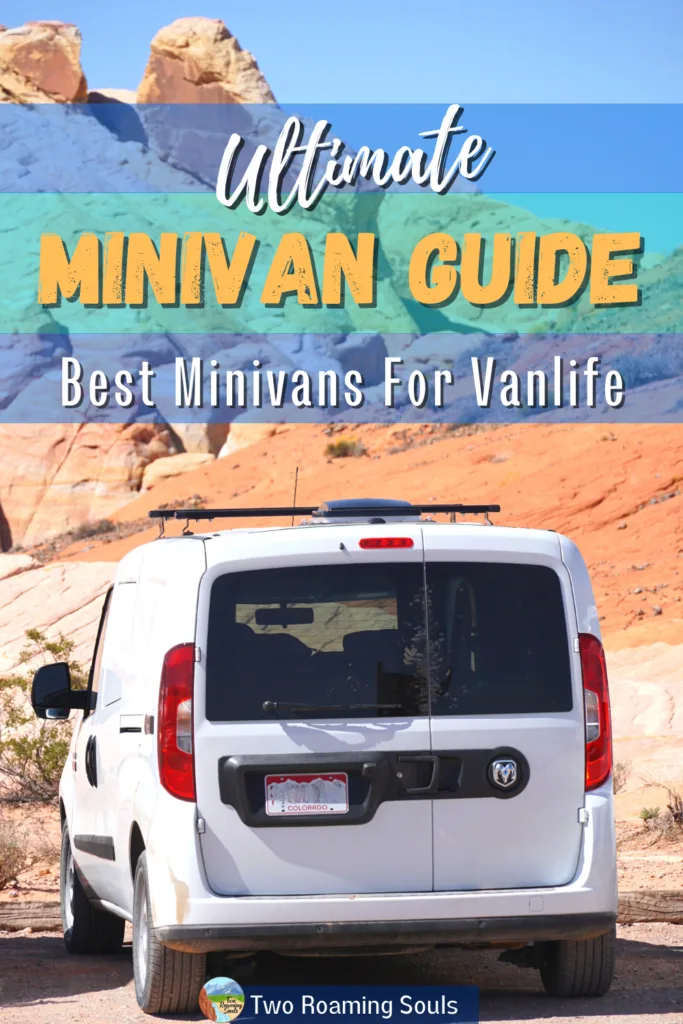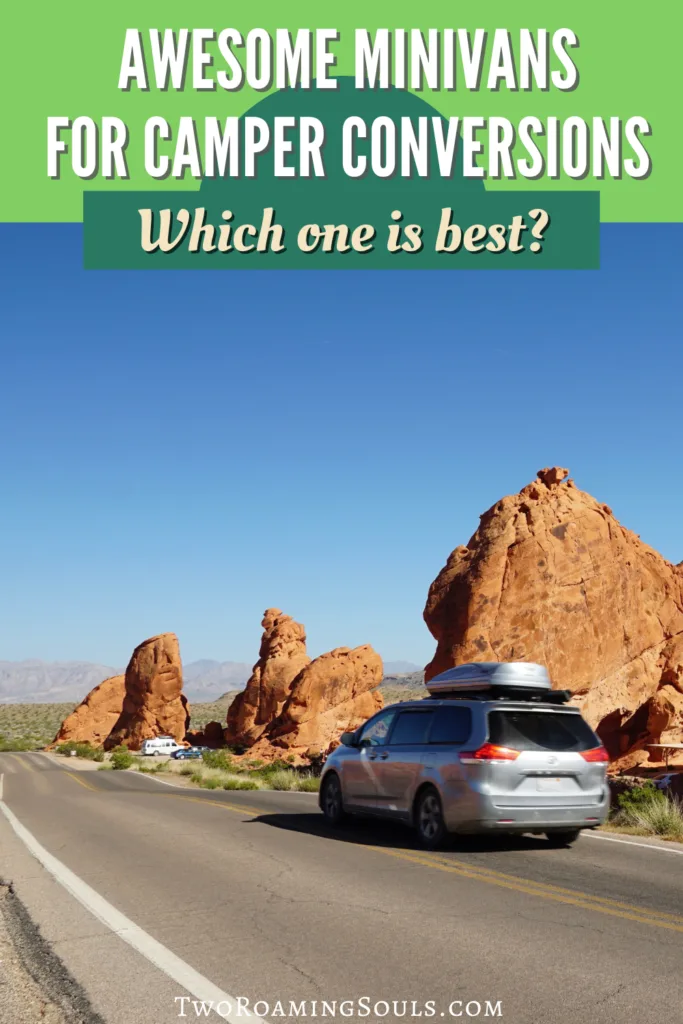
This post lists the best vans for minivan camper conversions. I focus on minivans sold in North America, though some minivan models may exist in other markets as well. This is the most complete vanlife-oriented breakdown of popular minivans anywhere on the internet.
I spent (too) many hours pouring over spec sheets, measuring random people’s vans, and sifting through videos to finally gather the relevant data all in one place.
While there are many reasons that buyers might choose one minivan over another, I mostly chose to highlight the things that matter most for minivan camper conversions.
Stats like interior cargo volume, interior height, mpg, and reliability are weighted much more heavily than tech features or gimmicky trim options.
Minivans offer a perfect blend of features that makes them ideal for small DIY camping conversions. They have enough room for a bed, small kitchenette, and other personal belongings.
Minivans are designed to maximize cargo space while maintaining good gas mileage and affordability. For those on a tight budget, older minivans are the perfect entry into vanlife.
But with so many minivans to choose from, which one is best for you?
Minivans roughly fall into 3 different categories:
- Minivans: Family-oriented passenger minivans
- City Vans: Newer Euro-style compact cargo panel vans (≈ 2009-2023)
- Discontinued Vans: older passenger/cargo minivans
Minivans
These are passenger minivans designed for families (like Toyota Sienna, Chrysler Pacifica, Honda Odyssey, etc). I think it’s safe to just call this category Minivans (with a capital M) since it’s what everyone pictures when you say the word minivan.
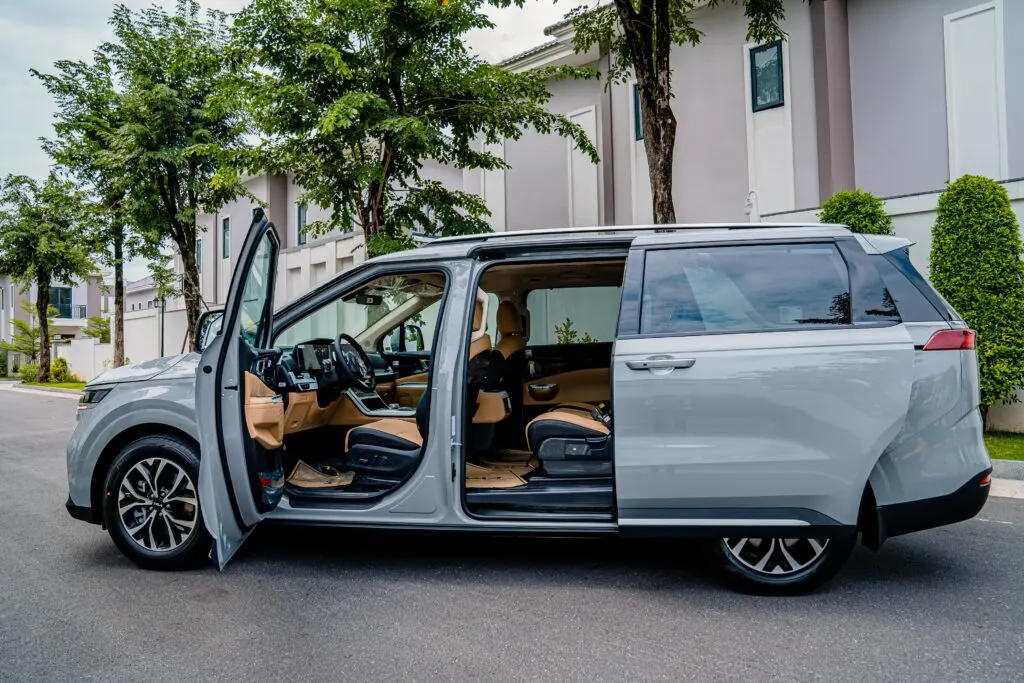
So manufacturers have started calling them MPVs, or Multi-Purpose-Vehicles. I also refer to them as family minivans throughout this post.
There’s really not that many Minivans left in production, as most manufacturers have pivoted to SUVs.
Minivans are not available in cargo versions, so expect them to come full of passenger seats and windows on all sides.
The seat configuration has been pretty consistent over the last decade or more. There are standard driver and passenger front seats, followed by a second row consisting of two captain’s chairs, and then a third-row bench with three seats.
The third row folds down into the floor or the trunk to create a flat cargo platform. And the second-row seats can slide, fold, or be removed entirely to achieve maximum cargo capacity.
Minivans are a good option for a campervan conversion that also doubles as a people-mover. You can utilize folding seats to somewhat quickly transform back and forth from family car to weekend camping rig.
Minivans’ round body shape and abundance of windows make them challenging to convert the same way as a cargo van (with insulation, wood paneling, etc.)
City Vans (Compact Cargo Vans)
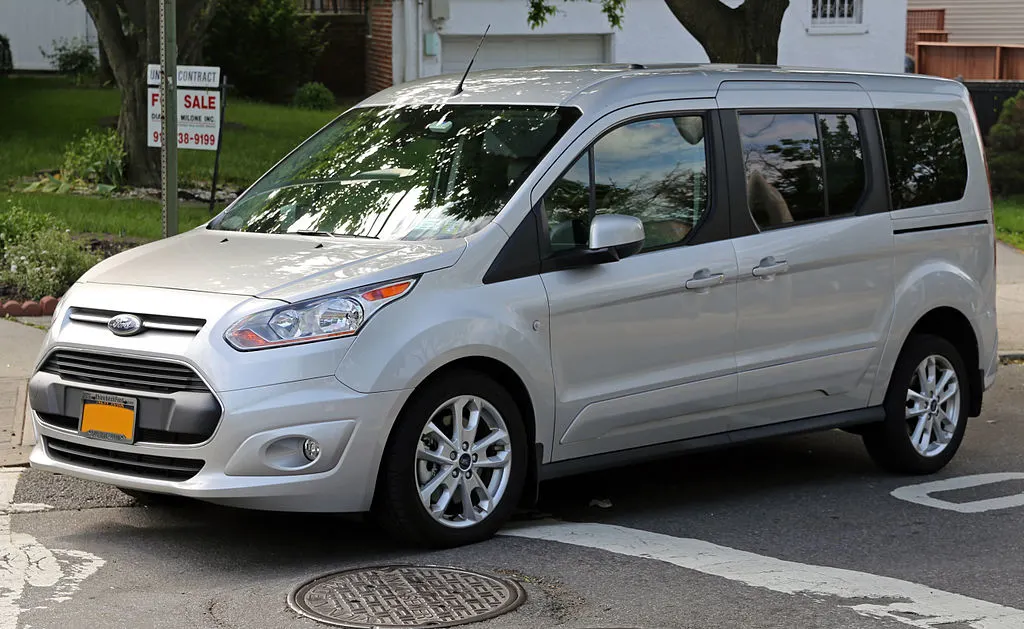
The newer Euro-style cargo “city vans” are sedan-based panel vans. Or sometimes called compact cargo vans. These were produced from around 2010 to 2020.
They are marketed as work vans for light duty. They’re better suited to urban driving than their full-size van counterparts.
In that way, these city vans share some benefits of being like a sedan: good mpg, nimble handling, cheap to maintain, etc. But what you lose compared to full-size vans is payload capacity, towing capacity, overall cargo space, and ground clearance.
City vans are typically sold as cargo vans with metal panels instead of windows in the back. However, some passenger (wagon) models can be found.
The empty cargo shell is a blank slate that makes them a better choice for more permanent van conversions. Installing things like insulation and walls is easier on this platform.
In 2009, the Ford Transit Connect basically created the “city vans” market segment in North America. Nissan, Chevrolet, RAM, and Mercedes all introduced similar city vans to compete in this segment.
But one by one, all manufacturers have discontinued their city vans. So for now, production of this segment of minivans has reached its end.
Older Discontinued Minivans
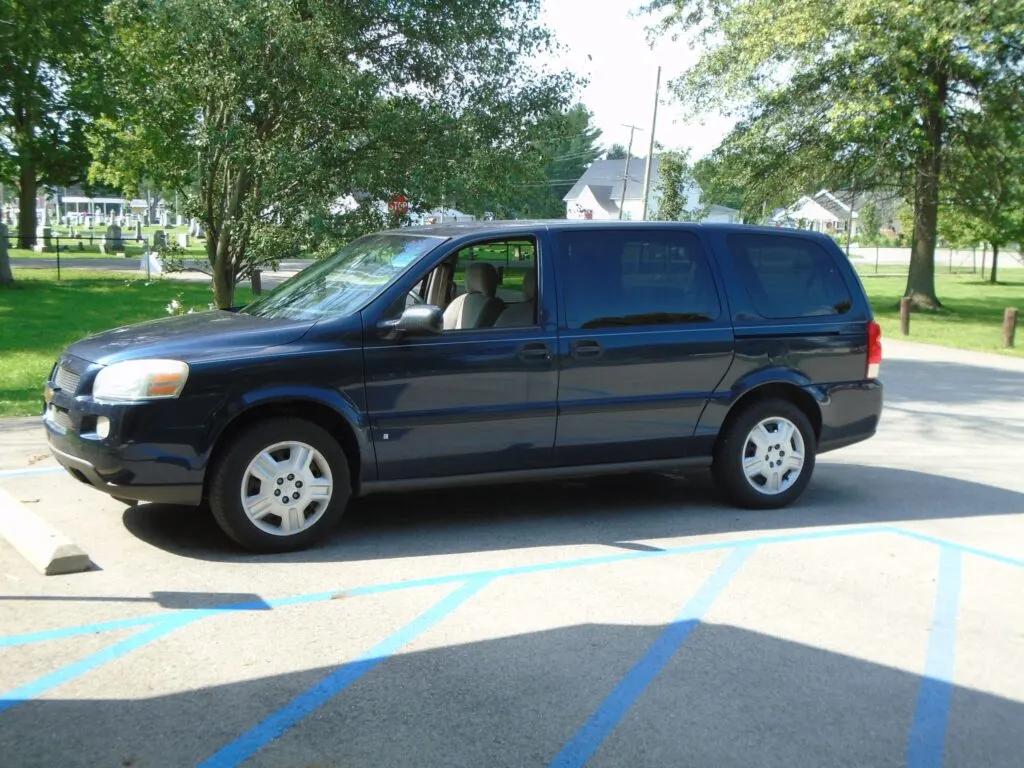
Finally, there’s the endless list of discontinued minivans. If you only have the budget for a really cheap used minivan, then these older-generation vans are a good place to look.
Names like Chevrolet Astro, Volkswagen Eurovan, Toyota Previa, Chevrolet Uplander, Ford Windstar, to name just a few. Many have come and gone, and plenty that most people will hardly remember.
Most of them don’t deserve too much explanation here, except for a few. The few stand-outs among the older model minivans are the Chevrolet Astro (AKA Astrovan), and it’s identical twin the GMC Safari, Volkswagen EuroVan, Toyota Hiace, and Mitsubishi Delica.
Best Family Minivans For A Camper Van Conversion
First, let’s explore the options for family Minivans. This category includes all the modern family-oriented passenger Minivans.
Toyota Sienna Minivan
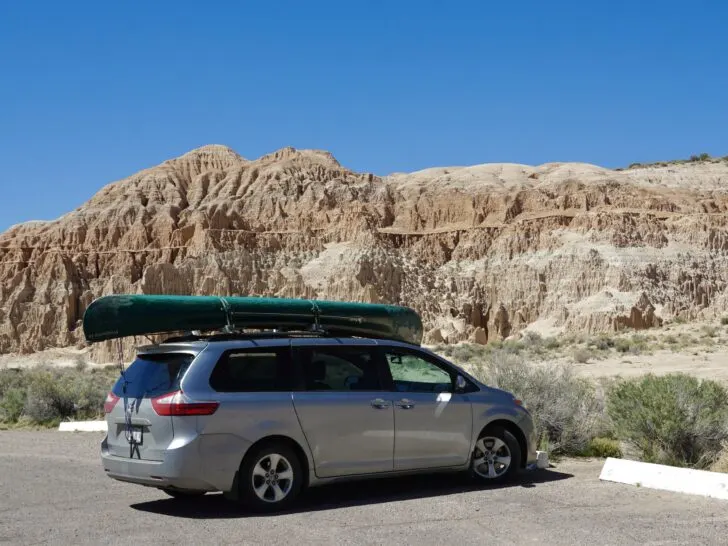
The Toyota Sienna Minivan is one of the longest running minivan models on the market. Their newest Sienna models are on par with the other top premium minivans on the market.
After 2021, all Toyota Siennas are hybrids (no more gas-only engines). This substantially bumped up fuel efficiency to around 35mpg (from 22mpg).
Toyota Siennas command a premium price because people value Toyota’s reputation for reliability. And proof of their reliability is evident by all the older used Toyota Sienna’s still on the road today.
Since 2004, the Toyota Sienna has been available in all-wheel-drive (AWD) models.
And unlike Chrysler Pacifica, you can get a hybrid Sienna with AWD.
Chrysler Pacifica
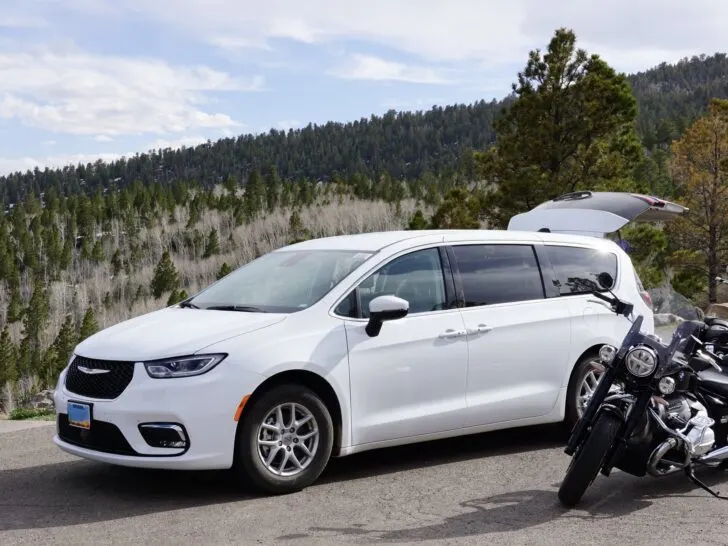
The Chrysler Pacifica (formerly Town & Country) is another one of the few remaining passenger minivans on the market. Their most notable features are Stow’n Go Seating and available All-Wheel-Drive (since 2020).
Stow’n Go seating has been around for a long time and offers a simple solution for transforming between camper conversion and people mover.
Or if you remove the seats entirely, you can use the subfloor compartments for extra storage.
The Chrysler Pacifica is available in plug-in Hybrid models (since 2017), however not with Stow’n Go seats or AWD. The plug-in hybrid Pacifica provides some electric-only range (unlike the Toyota Sienna Hybrid). But it does cost more.
Also, be aware that Chrysler made an SUV named Chrysler Pacifica from 2003-2007.
In 2020, Chrysler revived the Voyager minivan as a cheaper alternative to the Pacifica without all the bells and whistles. But after only one year, they pivoted to strictly corporate customers as a fleet-only vehicle. So it will likely be a while before post-2020 Voyagers make their way into the used market for regular people to get their hands on.
Honda Odyssey

The Honda Odyssey is the longest-in-production passenger minivan on the market (in production since 2004). Now on its fifth generation, it’s been revamped periodically over the years to remain somewhat competitive.
The Odyssey has fallen somewhat behind on interior styling and features, plus no AWD or hybrid option.
But Honda can still lean on their reputation for reliability to charge a premium price for the Odyssey.
In the categories that matter most for minivan camper conversions (interior cargo space, reliability, mpg), the Honda Odyssey is still a solid choice.
Dodge Grand Caravan
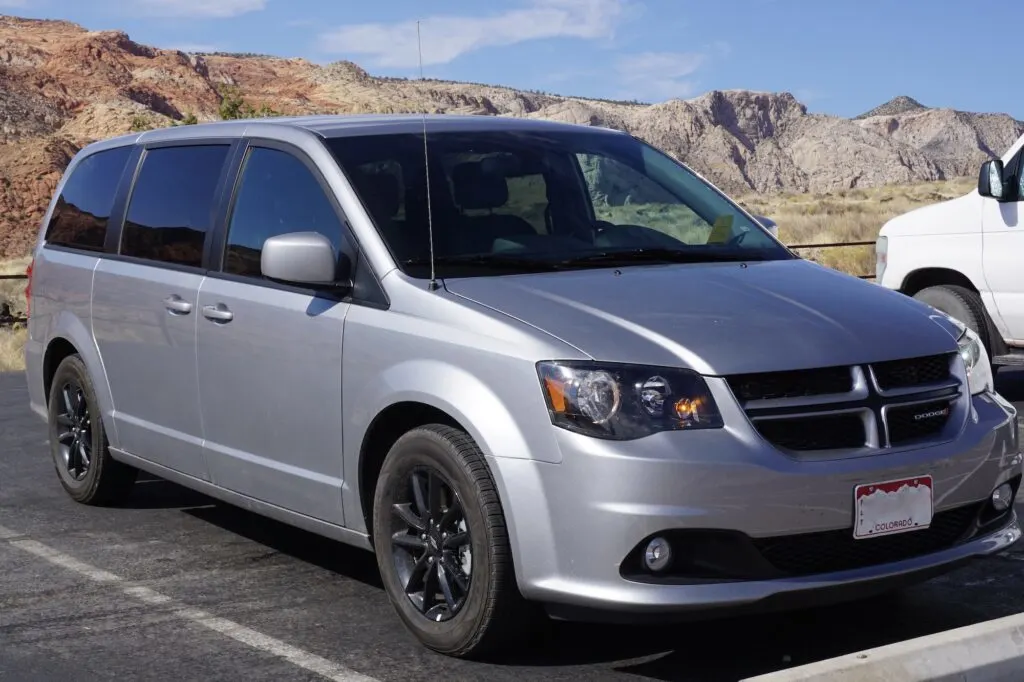
The Dodge Grand Caravan has the most budget-friendly purchase price of the newer-ish used Minivans. It was produced from 1996-2020, and was previously the Dodge Caravan from 1984-1995.
The Dodge Grand Caravan features the hallmark Dodge/Chrysler Stow’n Go seats. That is, the second row of seats folds into compartments in the floor (along with the third row).
The Dodge Grand Caravan isn’t quite as reliable as its Honda and Toyota competitors, but it’s still decent.
Kia Carnival (Formerly Kia Sedona)
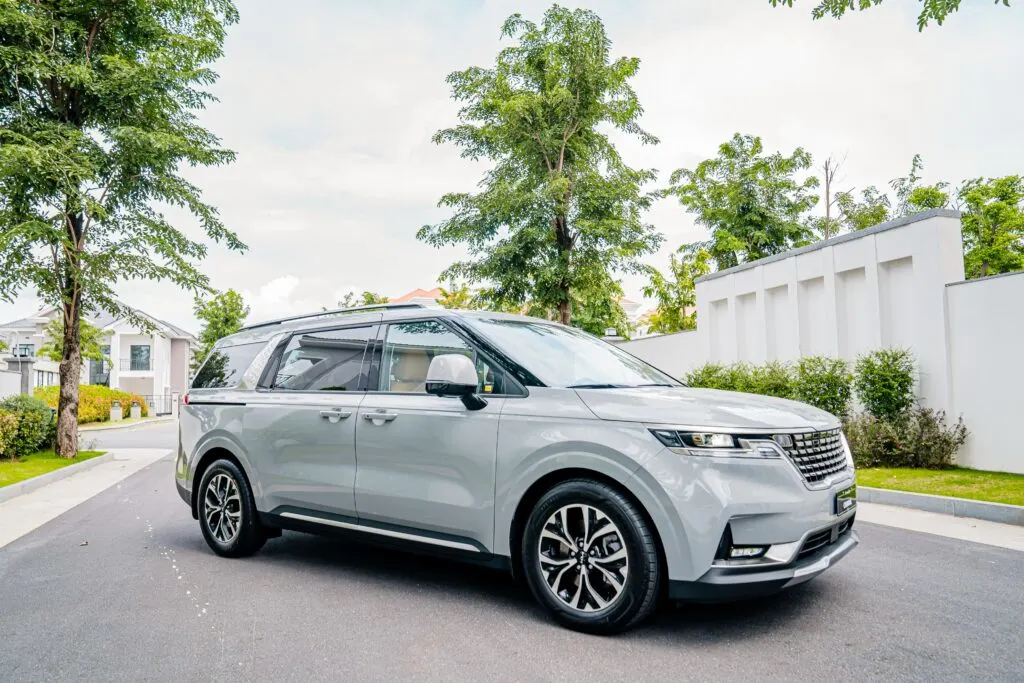
The Kia Carnival is kind of the flashy new entry into the North American Minivan segment. It has more boxy SUV-like styling in an attempt to break away from the minivan stigma.
You can be the judge of whether or not that attempt was successful (or if you even care).
It comes with a host of tech features, unique seating arrangements, and an upscale interior that catapulted it into competition with the other premium minivans. However, most of these nice-to-have features are not strictly relevant to prospective mini-vanlifers.
City Vans (Compact Cargo Vans)
This category includes all the sedan-based panel vans designed for urban driving.
Most of them are marketed with the namesake of that brand’s full-size van offering. For example: Ford Transit & Ford Transit Connect, RAM Promaster & RAM Promaster City, etc.
Ford Transit Connect
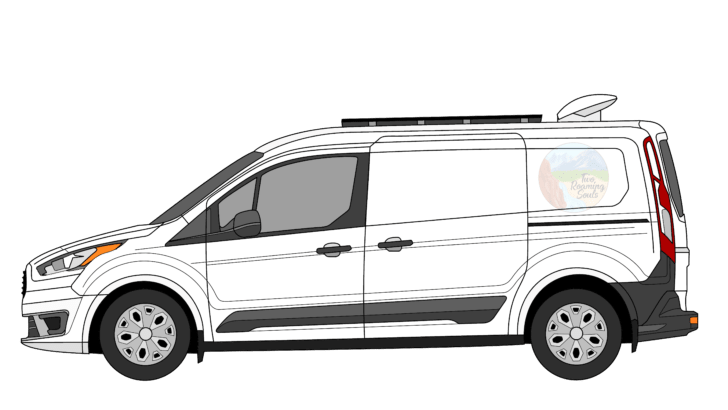
The Ford Transit Connect has dominated the city vans segment of the market since 2009. So when it comes to finding a used minivan in this category, you’ll encounter the most Transit Connects.
Ford Transit Connect is available in both cargo and passenger (wagon) versions. They are available in short wheel base (SWB) and long wheel base (LWB) versions.
However, really only the LWB model is long enough for a minivan conversion.
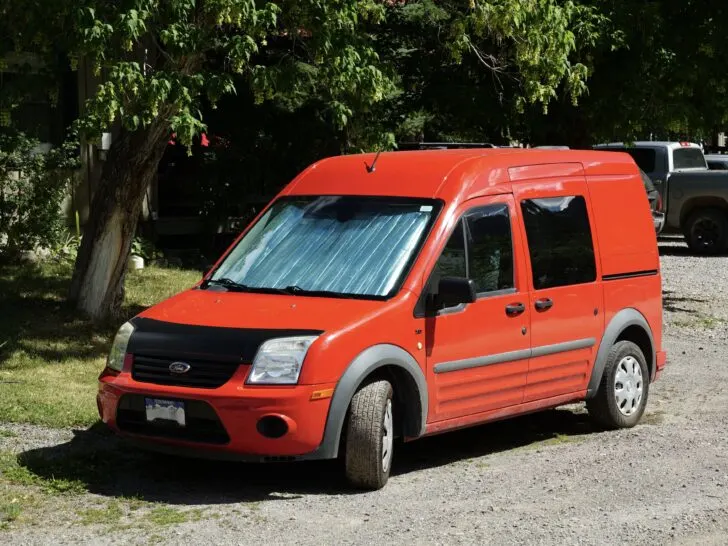
The SWB model cargo area length is only about 5’1”(measured at beltline from rear doors to the back of driver/passenger seat). However, if you are desperate, some models allow you to fold down the passenger seat to gain extra space.
But ultimately, most people should narrow their search to only LWB models for a Ford Transit Connect minivan conversion. The LWB Ford Transit Connect has an interior cargo volume of 127.4 cubic feet.
Don’t be fooled by the trim options (XL, XLT, and Titanium). These don’t refer to the body length, but rather what additional bells and whistles the van has (rear-view camera, Bluetooth, etc).
RAM Promaster City
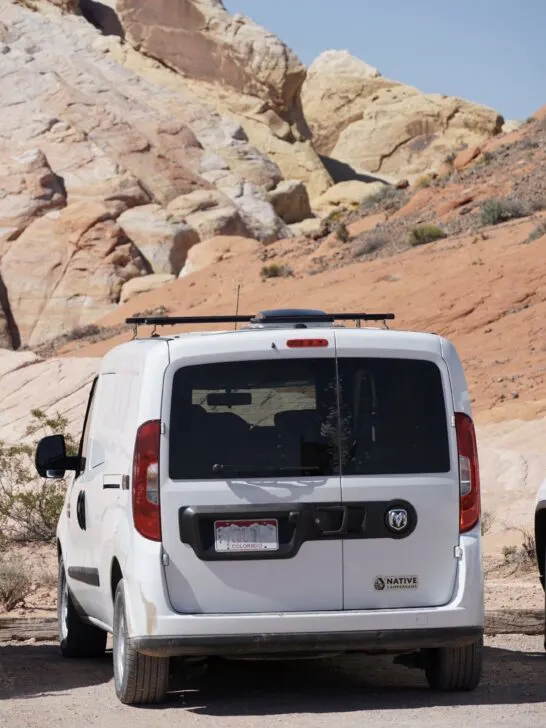
The RAM Promaster City is a North American adaptation of the Fiat Doblo. It’s actually the most unique of the city vans (Mercedes Metris excluded). The RAM Promaster City stands above the competition by a few vital metrics. It offers the most interior cargo space (131.7 cubic feet), the widest interior width (60”, compared to about 54” for Nissan, Chevy, Ford).
And the 51.8” interior height is right in the middle of the competitors.
Lastly, the RAM Promaster City offers best-in-class payload at 1890 lbs (the others are all around 1500 lbs).
Nissan NV200
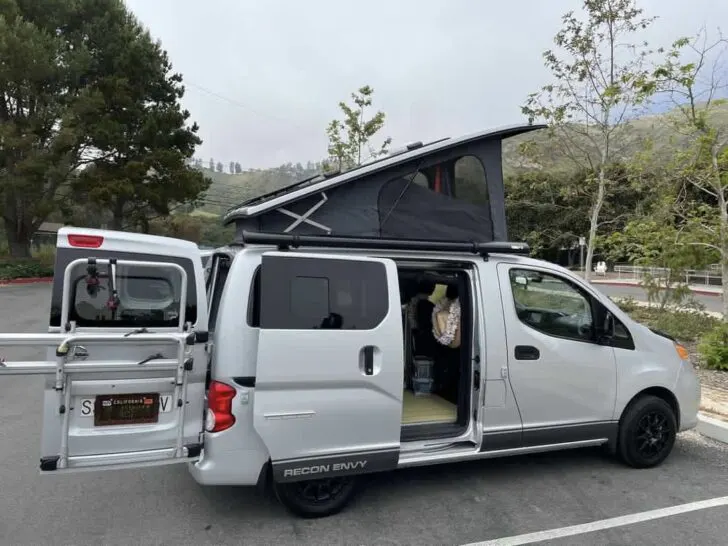
The Nissan NV200 was produced in North America from 2013 to 2021. It was the second vehicle to enter the city vans category. It’s only available in a cargo version.
The Nissan NV 200 came in two different trims S and SV. The “S” is the base model and “SV” has additional premium features (rear sonar, remote keyless entry, etc.)
It offers the least interior space of all the panel city vans (122 cubic feet). However, it actually has the tallest interior cargo space by a few inches (53 inches). Still not tall enough to stand up, but maybe a deciding factor for you.
Check out these awesome Nissan NV200 conversions.
Chevy City Express
Chevrolet made a deal with Nissan to sell their Nissan NV200 as a rebadged Chevy City Express. Thus, the Chevy City Express is practically identical to the Nissan NV200 by all the vital metrics.
So again, it offers the least interior cargo space (122 cubic feet) of all the city vans. But the 53” interior cargo height is tied for tallest in its class.
Mercedes Metris (V-Class)
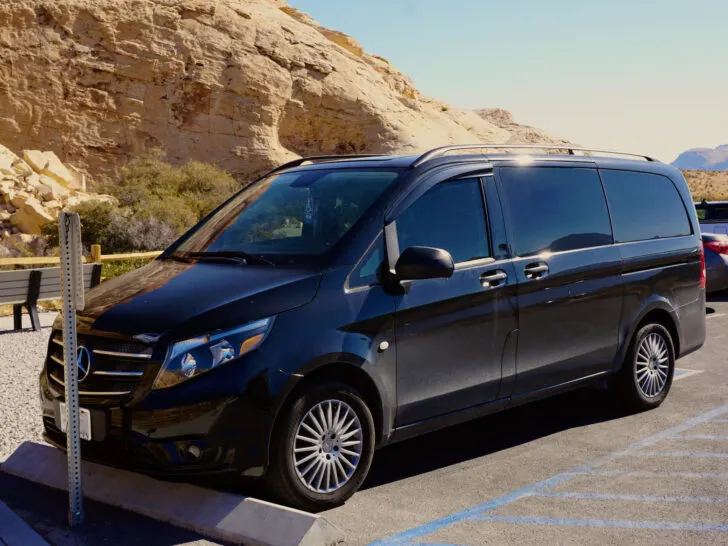
The Mercedes Metris was produced from 2015-2023 in North America. It kind of straddles the line between minivan and full-size van. It’s the largest and most powerful minivan, but with a fuel economy and price tag that reflects that.
But I’m not really sure it’s even fair to compare it to other minivans. It’s kind of an oddball for many reasons and thus hard to place in a category.
The Mercedes Metris is rear-wheel-drive (RWD) which is basically unheard of for modern minivans (yet common among full-size vans).
The Mercedes Metris is available in both cargo and passenger models. It’s also available in two wheelbase configurations: 135” and 126”.
The Mercedes Metris is significantly better by almost all size and power metrics for a camper van conversion (interior cargo volume, payload, and towing).
The interior cargo space for the 135” wheelbase Metris is 199 cubic feet, and 183 cubic feet for the 125” wb. City vans average around 125 cubic feet of cargo space, and family Minivans around 145 cubic feet.
The payload capacity of the Mercedes Metris is around 2200 lbs, which beats out all other minivans by around 400-800 lbs.
And the towing capacity of Metris is 5000 lbs, exceeding the rest of the minivans by 1500-3500 lbs.
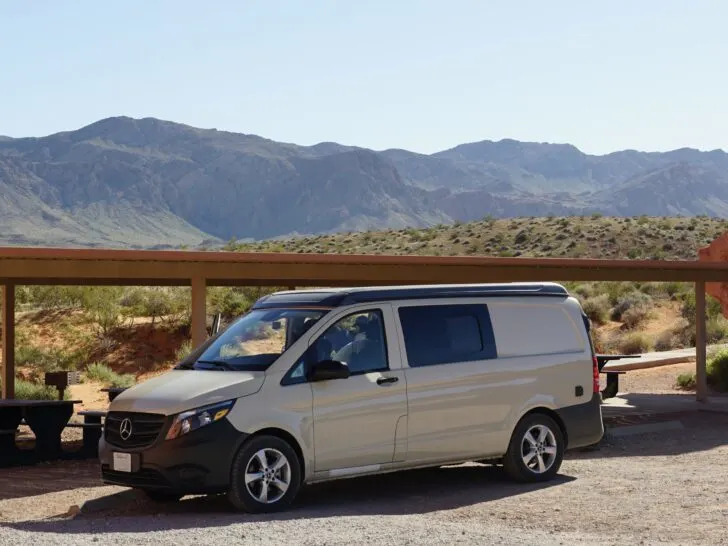
So what’s the catch?
Well, first, the Mercedes-Benz Metris has a combined fuel economy of 21 mpg (19 city, 23 highway). This puts it truly at the bottom compared to every other new-ish minivan.
And second, the Mercedes Metris is one of the most expensive vans for a minivan camper conversion. But honestly, it’s kind of on par with the price of the other premium trim family minivans (Toyota Sienna, Kia Carnival, Honda Odyssey).
And being a Mercedes-Benz simply means more expensive maintenance and repairs.
So the Mercedes Metris is in an awkward middle zone (MB seems to agree since they discontinued it). It’s the most powerful smaller van you can get, but still not tall enough to stand in. Which is why you will sometimes see them converted into a pop-top campervan.
But if you are going to spend that much on a van, most people would probably just get a Mercedes Sprinter Van or other full-size van. A full size van simply gives you much more space and power, with only a small decrease in fuel economy.
Older Discontinued Vans
Again, this category includes all the older discontinued minivans. Many of them being much older used vehicles they can represent a more budget-friendly entry into #minivanlife.
But don’t expect anything fancy. And it may accompany the challenges and realities of owning a much older vehicle. That being frequent repairs, discontinued parts, and the inevitable conqueror of all cars… rust!
There are so many minivans that have come and gone.
Names like Chevrolet Astro, Nissan Quest, Volkswagen Routan, Toyota Previa, Chevrolet Uplander, Ford Windstar, Ford Aerostar, Chevrolet Venture, Ford Freestar, Pontiac Montana, and I could go on forever.
Truly, I think the only ones that deserve their own section are the Chevrolet Astro/GMC Safari, Volkswagen EuroVan, and Toyota HiAce/Mitsubishi Delica.
Chevy Astro & GMC Safari
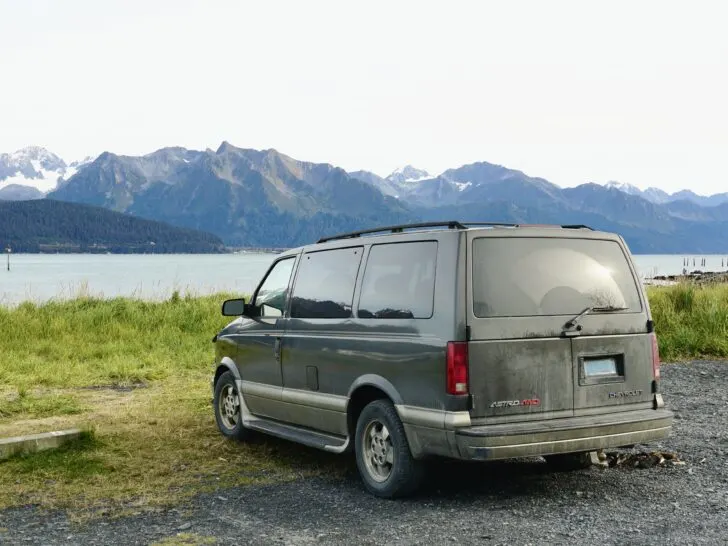
The Chevy Astro (Astrovan) and identical twin GMC Safari are two minivans that have stood the test of time. Despite their age, are still clinging on to relevance because they are one of the only vans with all-wheel-drive, and well, they just don’t make ‘em like they used to.
These two minivans are mechanically identical, with just different cosmetics and name plates. In production from 1985-2005, these boxy older vans still have somewhat of a cult following.
They are available with all wheel drive which alone makes them still sought after for minivan camper conversions. Otherwise they have Rear-Wheel-Drive, which makes them one of the only minivans with RWD (besides Mercedes Metris).
The Astrovan and Safari have a boxy platform that is elite when it comes to versatility. They are built more like a truck or actual “mini” van, if you will. Whereas most newer minivans borrow their construction from sedans and SUVs.

Volkswagen T4 (EuroVan)
Another popular older minivan is the Volkswagen Transporter (T4), or Volkswagen EuroVan, as it’s known in North America. It was/is popular for both DIY and professional camper van conversions.
It’s arguably not really a minivan because it’s larger size. But it’s definitely smaller than modern full-size vans like Ford Transit and Mercedes Sprinter. It somewhat similar to the Mercedes Metris in size.
Mitsubishi Delica & Toyota HiAce

And lastly, the Toyota Hiace and Mitsubishi Delica are some popular older Japanese minivan imports. They were never sold in the US, but are now allowed to be imported.
They are cherished for their four-wheel-drive, high clearance, and short wheel base. So they are uniquely capable vans for off-roading.
However some challenges of owning them are the right-side driver seat and difficulty getting parts and maintenance in North America.
What To Consider When Choosing A Minivan For A Camper Conversion
Can You Fit Your Bed?
The biggest thing to consider when choosing a minivan to convert with is whether it’s big enough to sleep in. If you cannot create a comfortable sleeping arrangement, then your journey into vanlife with be a short one, I promise.

Fitting a bed in a minivan depends on two key factors, your height and the length of the van.
With pretty much all minivans, an average adult can only fit laying along the length of the cargo area.
That is, minivans are not wide enough to allow sleep sideways (widthwise). Honestly, even sleeping sideways in full size vans is pushing it.
Compare your height versus the maximum interior length of the cargo area. This is typically measured from the back of the driver seat to the trunk doors. You want that interior cargo length dimension to be at least 5 inches longer than your height. This gives you the bare minimum buffer you need to account for your toes pointing farther and the thickness of any potential conversion materials.
Be careful not to get confused with the interior cargo length measured at the floor. This dimension is typically longer because the driver and passenger seats intrude at an angle. At the height that most people would build their bed, the length will be shorter by about 5 inches.
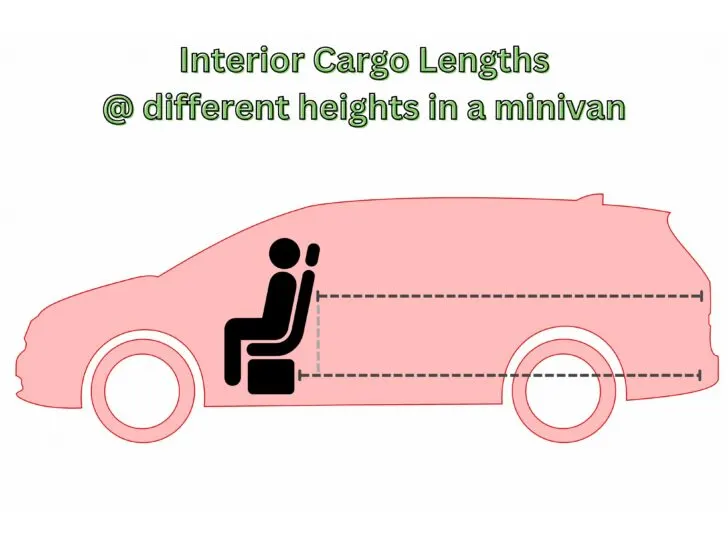
But you can possibly negate this if you plan to move the front seats up every night to sleep.
And be aware that city vans sometimes have a cab partition that reduces the interior length by around 10 inches.
A few inches may not seem like much, but in the small space of a micro campervan, it may make all the difference.
With pretty much any passenger minivans you will need to remove (or fold down) some or all of the rear seats to create enough room for your bed.
With newer passenger Minivans, be aware that they may be wired with airbags, so double check before removal.
If you were really desperate to make it work with a van that’s too small, there are three other things to consider.
- You can sleep diagonally in the van to gain a few extra inches of space. (But this isn’t ideal for layout reasons and not really feasible with two people.)
- In some vans, it’s possible to fold down the front passenger seat. For example, the Nissan NV200 allows the front passenger seat to fold, increasing the maximum cargo length (on one side) from 82.8” to 116.3”.
- Or lastly, you can remove the front passenger seat altogether. It seems as though this is legal (not a lawyer). But if you do remove the seat, consider that you will only be able to legally drive with one person (yourself). And it may hurt the resale value of the car.
Removing Seats From Minivans
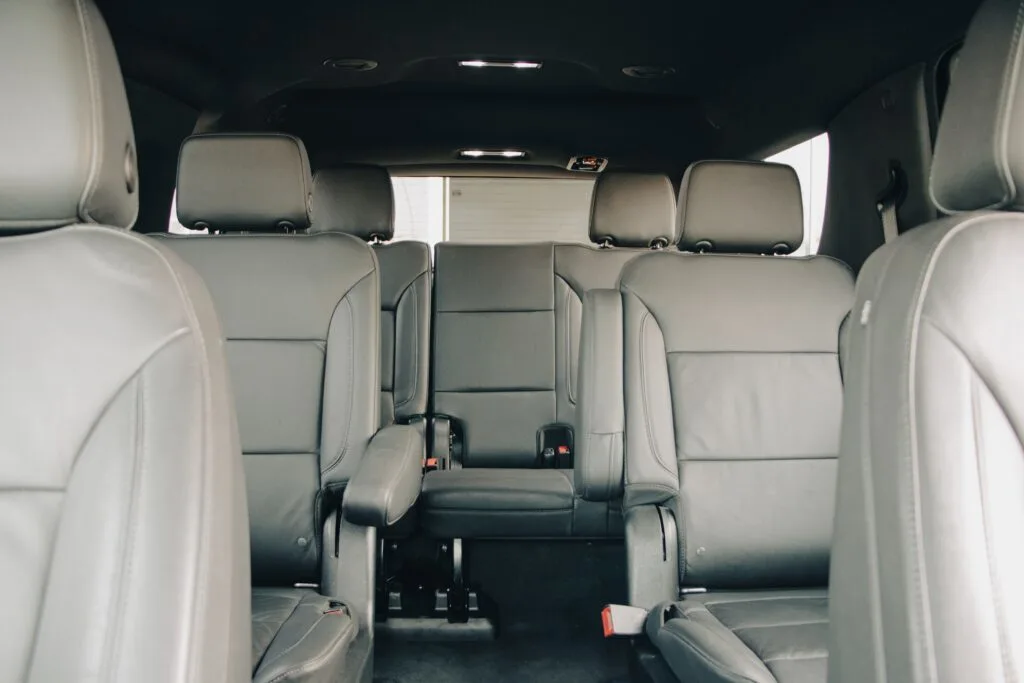
Ultimately, the best van for a camper van conversion is a cargo version. But really only compact city vans are available in cargo models. Cargo vans are typically cheaper and have slightly more interior space compared to a passenger version of the same model.
If you never intend to use your passenger minivan for more than two passengers, then you should probably remove all the rear seats. If you don’t have a place to store the seats, then you will have to get rid of them. This will obviously have an impact on the resale value. But it may not matter if you are committing this vehicle to being a campervan for the rest of its life (a noble cause, if you ask me).
Or like I mentioned with Dodge/Chrysler minivans, the Stow’n Go seats can just live in their floor compartments. Though you may still consider removing them to gain access to even more storage space.
No Standing Height Minivans
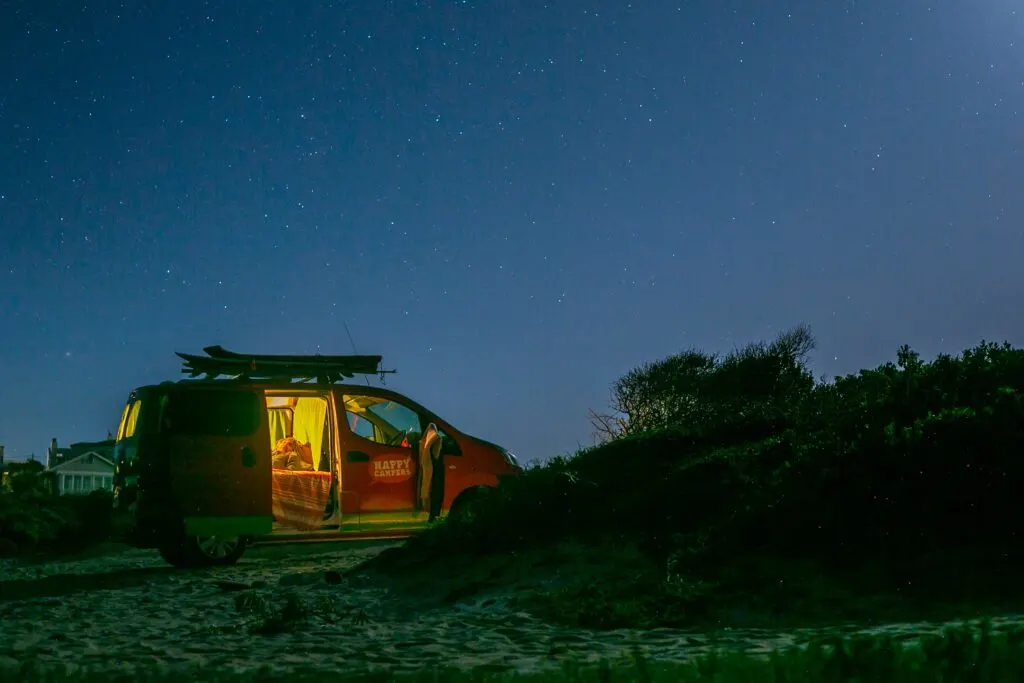
No minivans are tall enough to stand up in. Therefore, all your time spent inside your minivan camper will be either sitting, kneeling, or lying down.
This is a bit of a lifestyle adjustment that wears on most low-roof vandwellers after a while.
It encourages you to spend more time outside your van, which is fine in good weather, but not ideal during long stretches of bad weather.
If you are looking for vans that can accommodate standing up, you need to look into high-roof or pop-top vans.
Total Interior Cargo Volume
One of the most important factors for vehicle dwelling is interior cargo space. Usually, it’s a measure of the volume behind the front seats. Or, simply put the amount of space you have for your conversion.
For city vans, their interior cargo volume is easy to find and doesn’t change much over the years.
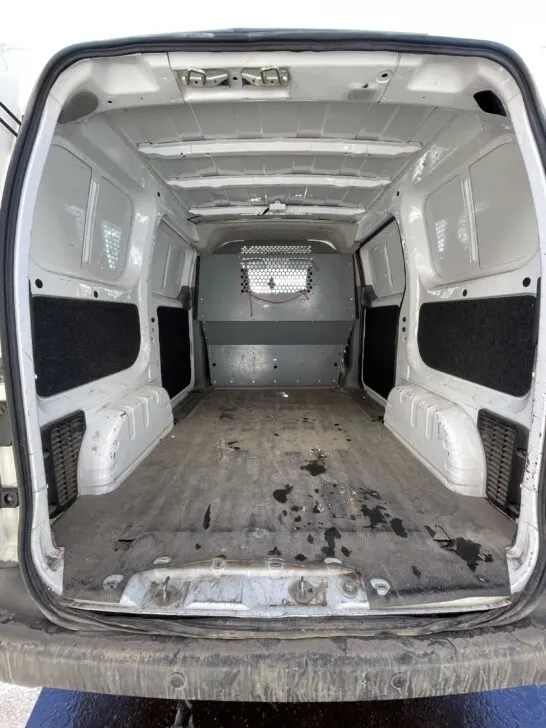
Here are the rankings of City Vans from highest to lowest (measured in cubic feet).
- Mercedes Metris LWB = 199.2
- Mercedes Metris SWB = 182.9
- RAM Promaster City = 131.7
- Ford Transit Connect LWB = 127.4
- Nissan NV200 = 122
- Chevy City Express = 122
- Ford Transit Connect SWB = 104.8
The Mercedes Metris beats out all other minivans in total cargo volume. Though, as I mentioned, classing it as a minivan is somewhat debatable.
But the interior cargo volume of passenger Minivans is a bit more difficult to find, the stats change over the years with updates. So it’s much harder to create a definitive ranking of Minivans by cargo volume.
I created this minivan interior volume spreadsheet to try to illustrate how these stats change over time.
Generally they mostly have an interior cargo volume around 140-150 cubic feet. But there are some notable outliers.
Probably the biggest outlier to me is that between model years 2019 and 2020, Toyota Sienna dropped from 150 cu.ft to 101 cu.ft. It seems to coincide with the switch to hybrid-only. Presumably that space was devoted to batteries or other things needed for the transition to hybrid. If it’s truly a reduction of 49 cubic feet of living space, then that is significant.
The other outlier is that the pre-2008 Dodge/Chrysler models had nearly 170 cubic feet of cargo volume. So these older models offer lots of space that isn’t really available with newer models.
Lightweight Conversions Only
Minivans have lower payload than full-size vans. However with less total space available, this is a somewhat self-regulating problem.
Yet some consideration may still be needed for the weight of your conversion. Things like wood, batteries, water storage are some of the heaviest items in a camper van conversion.
The minivan may feel sluggish and overweighted, especially at higher elevations.
Less Space For Solar Panels
When it comes to solar power, square footage is the name of the game. And minivan camper conversions simply don’t have as much room for solar panels. Luckily, with just a roof vent fan, there’s generally enough room left for a small-medium sized solar array (100-400 Watts).
The issue arises if you want to put anything else on your roof, like a cargo box, roof racks, rooftop tent, etc. Then you will quickly run out of space for enough solar panels for off-grid solar needs.
Reliability of Minivans
Reliability is an important consideration when choosing a vehicle for a minivan conversion. This one is always difficult to quantify and measure. But the brands with the best reputation for reliability are Toyota and Honda.
Fuel Economy Of Minivans
Fuel economy is another important consideration for minivan campers, especially those embarking on long road trips. So which minivans get the best miles per gallon?
For this section, I use the manufacturer advertised mpg ratings. Note that real world mpg performance varies and is typically lower by a few mpg. This will be especially true for a heavy camper conversion with externally mounted accessories.
Unsurprisingly, the minivans with the best fuel economy are the newer hybrid models of Toyota Sienna and Chrysler Pacifica. The Toyota Sienna hybrid gets about 35 mpg. The Chrysler Pacifica hybrid gets about 31mpg. Though the hybrid Pacifica isn’t available with Stow’n’Go Seats or AWD.
Gas engine passenger Minivans all have mpg ratings around 19 city and 27 highway. These ratings have steadily improved over time. So if you purchase an older model, it may have worse mpg than that.
All of the city vans (Ford Transit Connect, etc.) average around 24mpg city and 29mpg highway. The RAM Promaster City is a little different, advertised as 21mpg city and 28mpg highway.
The Mercedes Metris is at the bottom with 19mpg city and 21mpg highway.
DIY Minivan Conversion or Professional Minivan Conversion
DIY conversions are typically the more affordable path to a minivan camper conversion. And they can range from simple “no-build” conversions to elaborate conversions.
A simple “no-build” conversion might includes a small mattress or sleeping pad, sleeping bag, cooler, portable power station, and plastic drawers.
But if you are wanting a more elaborate conversion and you don’t have the skills, you can turn to minivan conversion kits or professional van conversion companies.
Conclusion: Best Vans For Minivan Campervan Conversions
A minivan is a great choice if you are looking for a smaller vehicle for a low roof campervan conversion. They maximize cargo space but without killing your wallet at the fuel pump.
Minivans camper conversions are easier to drive and park than full size vans, and have cheaper parts and maintenance.
City Vans Vs Family Minivans
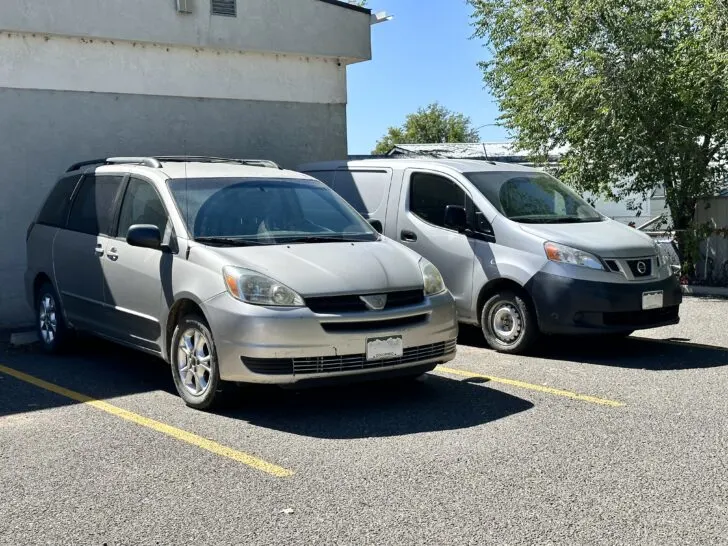
If you are trying to decide between city vans and family minivans, here’s the basic summary.
City Vans are cheaper to buy and maintain. They are smaller vehicles, more like a boxy sedan. The only dimension where they beat family minivans is interior height. And City Vans have less power with typically just a V4 engine. Cargo versions are the best blank slate for a full van conversion (insulation, walls, wiring, etc).
Family Minivans are more expensive to buy and maintain. They are larger vehicles overall, more like a long round SUV. Minivans are on average about a foot longer than city vans, but the interior height is slightly shorter. And family Minivans are better for temporary conversions, that can convert easily back into a people mover.
Our Top Choice Minivans
Our top choices of the Minivans category are the Toyota Sienna and Chrysler Pacifica. They both offer a good value given their specs and are available with all-wheel drive.
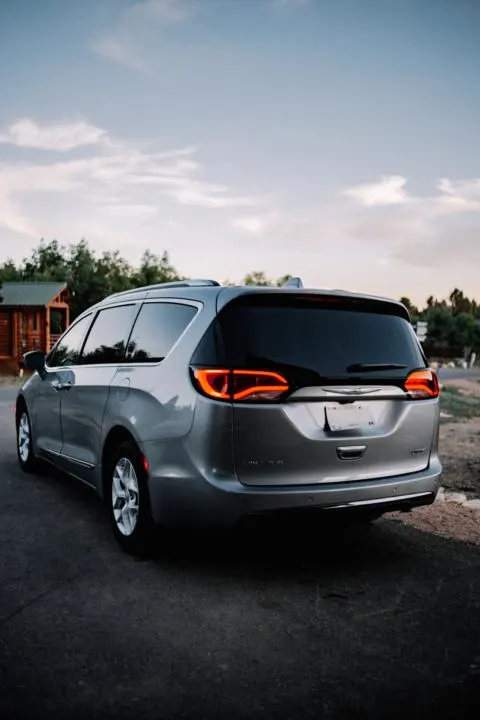
The Pacifica is a little bit cheaper than similar premium Minivans. The post-2020 Toyota Siennas only have 101 cubic feet of cargo space. But the increase to 35mpg may be a worthy trade-off for some people.
The Dodge Grand Caravan has the most budget-friendly purchase price of all the family minivans.
And the biggest advantage of the Dodge/Chrysler minivans is the Stow’n Go Seats. Obviously for the flexibility to fold all the seats down to create a flat surface for your minivan conversion.
However, I think the somewhat nuanced benefit is that if you remove the second row seats entirely, you then free up their sub-floor compartments for extra storage space. It could be a good place for batteries, or things you don’t need access to often.
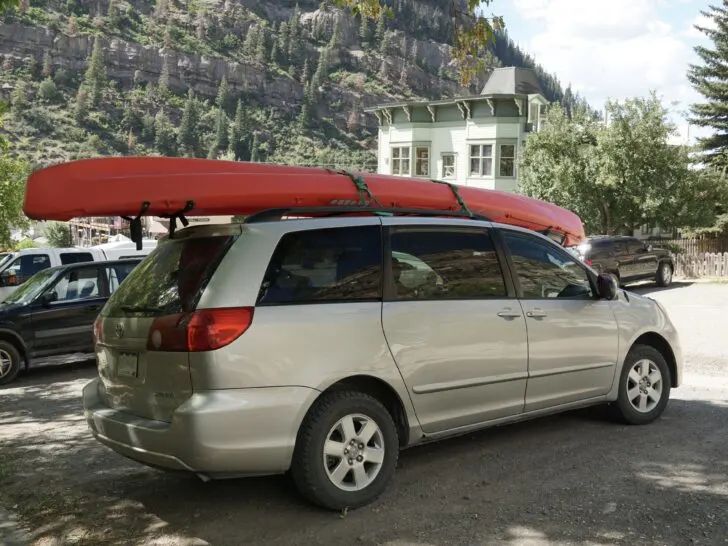
If you are looking for the most reliable Minivans, Toyota Sienna and Honda Odyssey are the top choice. For decades they have led the way in reliability, but the market prices reflect this. For one of these vans at any mileage, they typically cost a little bit more, as people are willing to pay more for that reputation of reliability.
Our top choice of minivans in the city vans category are the RAM Promaster City and the Ford Transit LWB. The RAM Promaster City has some real tangible advantages for a minivan conversion. It has best-in-class interior cargo volume and most payload, two factors that matter very much for van conversions.
The Ford Transit LWB is the runner up. It comes in second for overall interior cargo volume and payload. This video shows a great side-by-side comparison if you are looking for a tie-breaker.
In a perfect world, you would get to choose your dream minivan right down to the exact specs. But in the real world, you are more likely choosing from whatever vans are for sale near you when you are in the market.
And many people get obsessed with brands, sometimes ignoring the most important detail: vehicle condition. When it comes to purchasing a used minivan (or any used vehicle), it’s important to prioritize vans in good mechanical shape.
You would be better off with your second-choice or third-choice van in good shape, rather than your first-choice van in bad shape.
Any minor differences between models won’t matter much if your van breaks down or costs you a lot in repairs.
Visit our Complete Vanlife Page for an organized guide to all our campervan wisdom.
Share ‘Best Vans For Minivan Camper Conversions’ On Pinterest!
